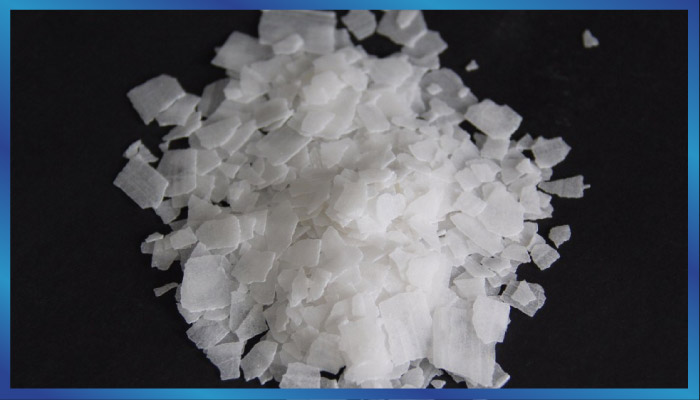Caustic soda (sodium hydroxide or NaOH) is most commonly manufactured by the electrolysis of a sodium chloride (NaCl) solution. Ishtar manufactures caustic soda flakes using either membrane or diaphragm electrolytic cells. It is not used mercury based electrolytic cells to produce caustic soda. The co-products formed from the electrolytic production of caustic soda are chlorine and hydrogen.
The largest users of caustic soda are the pulp and paper, detergent and chemical industries. Caustic soda is also used in the alumina, oil and gas and textile industries, mostly for its alkalinity value. Ishtar has played a leading role in providing caustic soda to meet the increasing demands of industry.
Ishtar plants are strategically located to conveniently and economically serve industry. Terminals are used to maintain stocks of our caustic soda in many principal cities. Distributor stocks are also available in these and many other cities and form a network of supply for the end user’s convenience.
Liquid caustic soda is available as a 50% solution in two main grades. The name of the grades corresponds to the equipment used to produced the caustic soda; membrane grade and diaphragm grade.
To be technically correct, only molten caustic soda should be called liquid, but since the term liquid caustic soda has historically been used to describe solutions of caustic soda, it is used in this document interchangeably with the term solution.
Principal Uses of Caustic Soda
Caustic soda is one of the very few chemicals utilized in a very broad range of applications. Some principal products or processes in which caustic soda is used are:
• Acid Neutralization
• Agricultural Chemicals
• Aluminum
• Battery Recycling
• Bleach
• Boiler Compounds
• Cellulose Film
• Chemicals:
Ammonia
Amyl Amines
Cresol
Ethylene Amines
Formic Acid
Glycerine
Maleic Anhydride
Pentaerythritol
Phenol
Propylene Oxide
Polycarbonates
Salicylic Acid
Sodium Aluminate
Sodium Hydrosulfide
Sodium Hypochlorite
Sodium Phosphates
Styrene
Vinyl Chloride Monomer
• Cleaning Formulations
• Corn Syrup
• Detergents
• Drain Cleaners
• Dyestuffs
• Ethanol Fermentation
• Food Processing
• Fruit & Vegetable Peeling
• Glass-Batch Wetting
• Ion-Exchange Resin
Regeneration
• Metal Production and Casting
• Ore Flotation and Processing
• Paint Removers
• Petroleum Refining
• pH Adjustment
• Pharmaceuticals
• Pigments
• Pool & Spa chemicals
• Pulp & Paper
• Rayon
• Silicates
• Soap
• Surfactants
• Textile Bleaching, Dyeing, and
Mercerizing
• Vegetable Oil Processing
• Water Treatment
Caustic soda manufacturers is producing by an electrolyte process as shown below. Brine, prepared from sodium chloride (NaCl), is electrolyzed in either a membrane cell or a diaphragm cell.
The production of caustic soda (NaOH) also results in the co-products of chlorine and hydrogen. In the membrane process, a solution of approximately 30% in strength is formed. The solution is then sent to evaporators, which concentrate it to a strength of 50% by removing the appropriate amount of water. The diaphragm process is very
similar to the membrane process except that a solution of only 10-12% is formed in the cell.
Therefore, additional evaporation is required to reach the saleable concentration of 50%. The caustic soda solution is inventoried in storage tanks prior to shipment. The product is shipped in tank trucks, railcars, barges and ships.
The major difference in the two grades is the amount of starting material (sodium chloride) remaining in the final product. Membrane grade caustic soda will have less than 100ppm of the sodium chloride remaining in the product.
Diaphragm grade material will have less than 1.2% sodium chloride.
Several other differences can be seen in the products when the specification sheets are compared.



